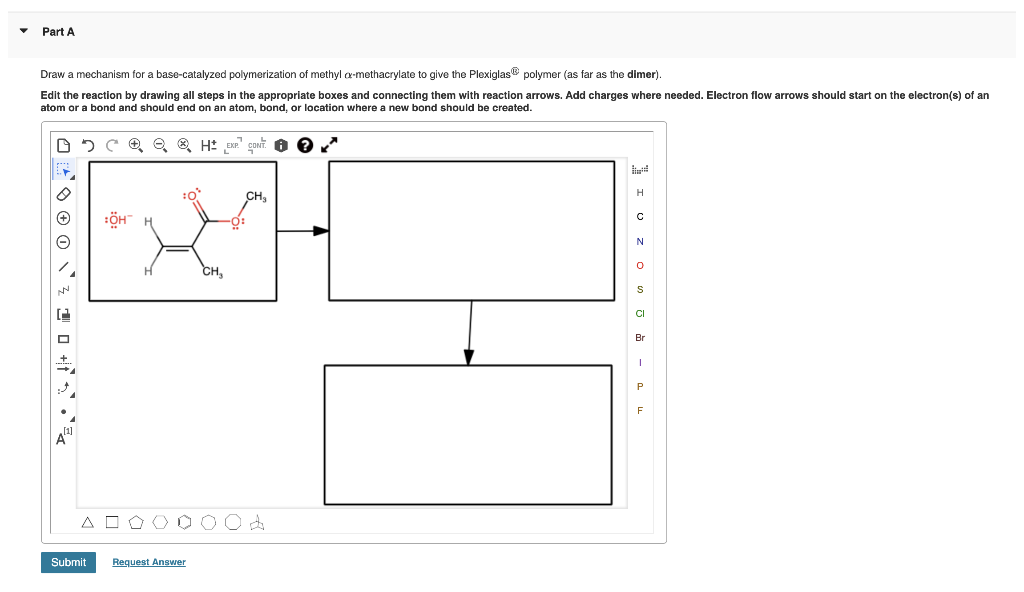Part A Draw a mechanism for a base-catalyzed polymerization of methyl a-methacrylate to give the PlexiglasB polymer (as far as the dimer). Edit the reaction by drawing all steps in the appropriate boxes and connecting them with reaction arrows. Add charges where needed. Electron flow arrows should start on the electron(s) of an atom or a bond and should end on an atom, bond, or location where a new bond should be created. EXP CONT. O H CH, CH CI Br A O O (O C Submit Request Answer
Part A Draw a mechanism for a base-catalyzed polymerization of methyl a-methacrylate to give the PlexiglasB polymer (as far as the dimer). Edit the reaction by drawing all steps in the appropriate boxes and connecting them with reaction arrows. Add charges where needed. Electron flow arrows should start on the electron(s) of an atom or a bond and should end on an atom, bond, or location where a new bond should be created. EXP CONT. O H CH, CH CI Br A O O (O C Submit Request Answer
Organic Chemistry
8th Edition
ISBN:9781305580350
Author:William H. Brown, Brent L. Iverson, Eric Anslyn, Christopher S. Foote
Publisher:William H. Brown, Brent L. Iverson, Eric Anslyn, Christopher S. Foote
Chapter29: Organic Polymer Chemistry
Section: Chapter Questions
Problem 29.34P: Radical polymerization of styrene gives a linear polymer. Radical polymerization of a mixture of...
Related questions
Concept explainers
Question

Transcribed Image Text:Part A
Draw a mechanism for a base-catalyzed polymerization of methyl a-methacrylate to give the PlexiglasB polymer (as far as the dimer).
Edit the reaction by drawing all steps in the appropriate boxes and connecting them with reaction arrows. Add charges where needed. Electron flow arrows should start on the electron(s) of an
atom or a bond and should end on an atom, bond, or location where a new bond should be created.
EXP CONT. O
H
CH,
CH
CI
Br
A O O (O C
Submit
Request Answer
Expert Solution
This question has been solved!
Explore an expertly crafted, step-by-step solution for a thorough understanding of key concepts.
This is a popular solution!
Trending now
This is a popular solution!
Step by step
Solved in 2 steps with 1 images

Knowledge Booster
Learn more about
Need a deep-dive on the concept behind this application? Look no further. Learn more about this topic, chemistry and related others by exploring similar questions and additional content below.Recommended textbooks for you

Organic Chemistry
Chemistry
ISBN:
9781305580350
Author:
William H. Brown, Brent L. Iverson, Eric Anslyn, Christopher S. Foote
Publisher:
Cengage Learning

Organic Chemistry
Chemistry
ISBN:
9781305580350
Author:
William H. Brown, Brent L. Iverson, Eric Anslyn, Christopher S. Foote
Publisher:
Cengage Learning